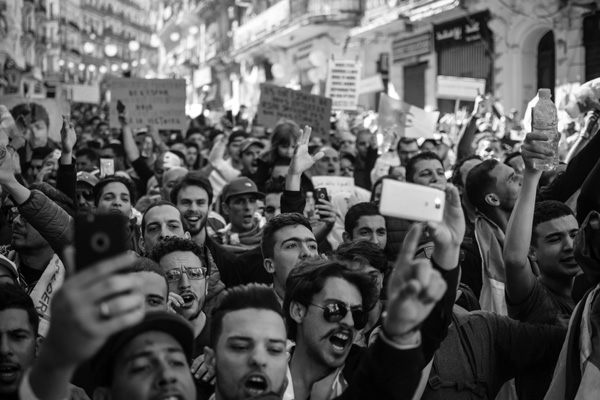Music takes center stage in protests calling for Yoon’s impeachment

[Crowd of people Black and White Photo. Photo credit to Pexels]
In early December 2024, downtown Seoul lit up in an unexpected way with the colorful glow of K-pop fans’ light sticks.
As calls for President Yoon Suk-yeol’s impeachment gained momentum, thousands of demonstrators gathered near the presidential office.
Many young protestors were armed not with slogans on placards, but with the lyrics and rhythm of K-pop.
K-pop enthusiasts transformed into activists almost overnight, turning their passion into a form of protest.
They marched in sync, waved neon lights, and sang lines that spoke of justice, strength, and hope.
These protests didn’t come out of nowhere.
Anger had been brewing over the government’s push for increased surveillance powers and what many saw as an erosion of press freedoms.
Critics accused President Yoon of edging toward authoritarianism.
When the authorities tried to block conventional demonstrations under the guise of safety, K-pop fans outsmarted them, reframing their gatherings as fan events.
These fans leaned into the aesthetics of fandom: synchronized chants, custom-made banners, and flashmob-style routines.
But behind the playlists and photocard giveaways, they made it clear: they were there to be heard.
What happened in Seoul is part of a long-standing global story of music stepping in when politics fail.
Protest songs didn’t start with Spotify or social media.
In the 1800s, Frédéric Chopin used his Polonaises to express Poland’s national identity and grief under Russian occupation.
His music carried defiance, even as he lived in exile.
Under Stalin, Dmitri Shostakovich walked a dangerous line, crafting symphonies that pleased the state on the surface but whispered resistance underneath.
His Fifth Symphony was officially celebrated, yet many listeners heard a quiet rebellion behind the orchestral smiles.
During World War II, French composer Olivier Messiaen created his Quartet for the End of Time in a Nazi prison camp, using sparse instruments and spiritual themes to reflect on human endurance.
Throughout history, music has always found its way into protest.
Billie Holiday’s chilling “Strange Fruit” confronted racism in America.
Originally a poem written by Abel Meeropol in 1937, the song vividly depicted the horrors of lynching in the Jim Crow South.
Holiday first performed it in 1939 at New York's Café Society, delivering a powerful indictment of racial violence that shocked audiences and was banned by many Southern radio stations.
Despite this, it became one of her most iconic songs.
In Nigeria, Fela Kuti used Afrobeat to take on military oppression during the 1970s.
His politically charged songs criticized authoritarian rule and sparked violent retaliation.
From jazz clubs to street rallies, music gives movements something powerful: a sense of unity, identity, and emotional truth that speeches alone often can’t capture.
What sets the South Korean protests apart is how seamlessly pop culture was repurposed for political resistance.
Items made for fandom such as light sticks, chants, and even merchandise became part of a carefully choreographed display of dissent.
Fans tapped into their digital networks to organize the protests, and continued livestreaming during the demonstrations themselves to gain global trending status.
Beyond vocal expressions, these activists orchestrated online initiatives, released coordinated video content, and shared their message with audiences worldwide.
It’s a powerful reminder that the line between entertainment and activism is more fluid than people think.
Whether through Chopin’s piano or a K-pop livestream, music continues to be a force for resistance giving people a way to fight, to remember, and to hope.

- Justin Ha (Junwoo Ha) / Grade 11 Session 2
- St. George’s Senior School

![THE HERALD STUDENT REPORTERS [US]](/assets/images/logo_student_us.png)
![THE HERALD STUDENT REPORTERS [Canada]](/assets/images/logo_student_ca.png)
